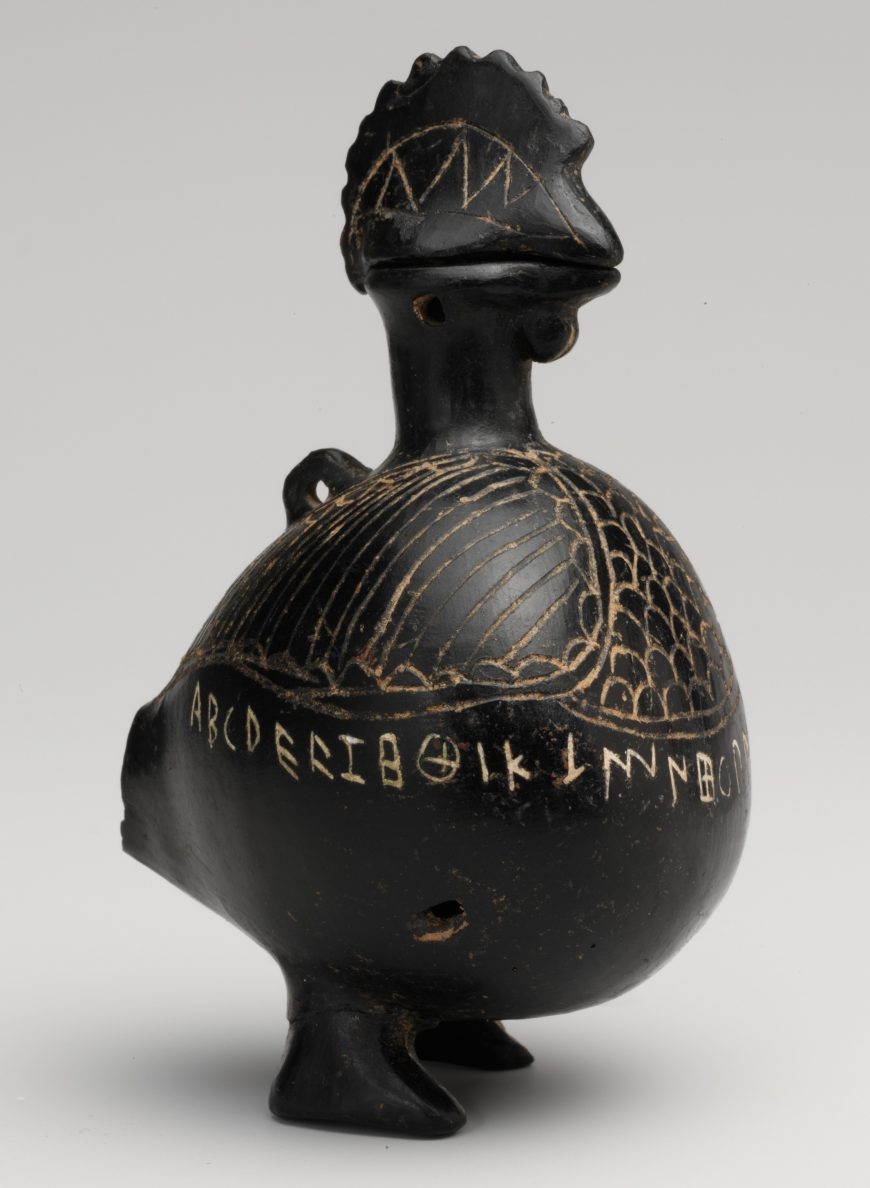Artwork Analysis Etruscan Art: Cockeral vase
The artwork I chose to write about is a vase in the
shape of a cockerel from the Etruscan era between 650-600 B.C.E. The vase is hypothesized to have been used to
hold ink inside. The vase is classified
as a type of bucchero, which is a distinct black ceramic piece which was
considered the material that was commonly used for Etruscan's. Believed to be used by elites at banquets, bucchero
demonstrates an elite display within the Etruscan people. Typically, one of these vases could be found
on banqueting tables to reinforce social ranking and to show ranking of their
achievements of them and their family who is displaying it. What caught my eye about this piece immediately
was the shape and the carvings. The shape
could have been anything but instead it is the shape of a cockerel. In the description provided by The
Metropolitan Museum of Art, the piece missing from the vase was a tail that
would curve down and act as a third leg for balance. The shape is different from other bucchero vases
shown through the Etruscan history and leaves me with a couple questions. Why this design specifically? What was use of this type of bucchero? Teaching, higher ups who need to be able to
write, could these be found in every space of living? The second thing that caught me on this piece
was that the Etruscan alphabet is inscribed on the mid-section of the vase. This is important to us as we research and
continue to learn about the Etruscan people.
Much like the Rosetta stone and how the discovery of such an object was
important to learn the language of Egyptians, I believe this should hold the
same level of significance. With
something like this or even the Rosetta stone, we have the availability to
learn more as we dig deeper into the cultures of both the Egyptian and the
Etruscan people. With the ability to read
what they wrote could hold even more significance. I chose this object specifically because seeing
that there was not much on it interested me.
Something simple in comparison to other bucchero pieces that are more
elegant for centerpieces at banquets.

Dr. Jeffrey A. Becker, "Bucchero," in Smarthistory, August 8, 2015, accessed September 8, 2020, https://smarthistory.org/bucchero/.


It's kind of cool to see an object like this and be able to relate to it in the modern world. I love the idea that ancient people were just like us in their ability to turn a utility object into an aesthetic. I wonder if it was maybe used to teach the kids how to read and write. Could it have been a cheat sheet of sort? I do find it interesting to note that these buccheros would have been used to show social ranking. Maybe the family that displayed this had a family name that likened to the cockerel. Why would you need an inkwell at a banquet is the main question that pops into my head.
ReplyDeleteI'm also interested in the reasoning behind the design that was chosen for this piece. Definitely causes some curiosity. I also like that it was used for social ranking because by just the slightest sight of a bucchero like this, you would instantly know how valued that family might be.
ReplyDeleteI find it interesting how this vase is used for social status. Maybe the unique shape contributes to that? Especially because it was so carved so differently from the other bucchero vases. It's pretty interesting to me how this vase holds ink but there is no trace of people actually writing with it.
ReplyDelete